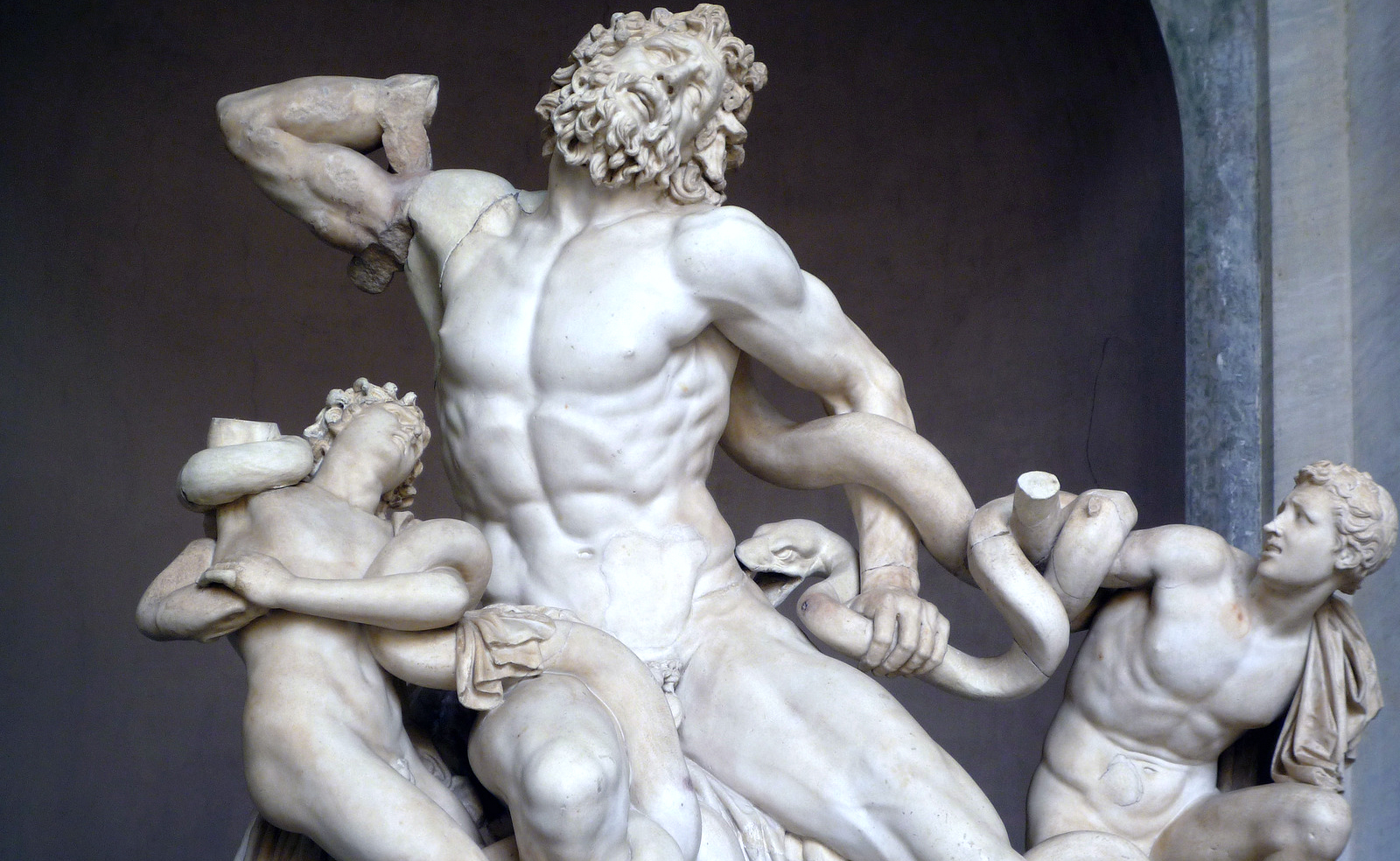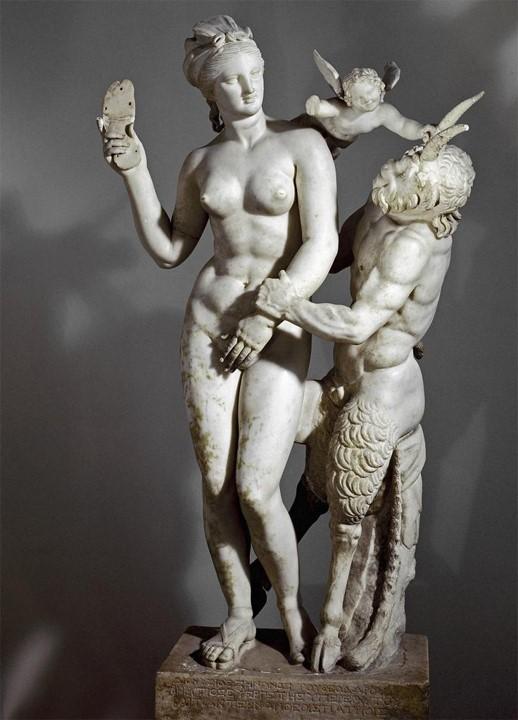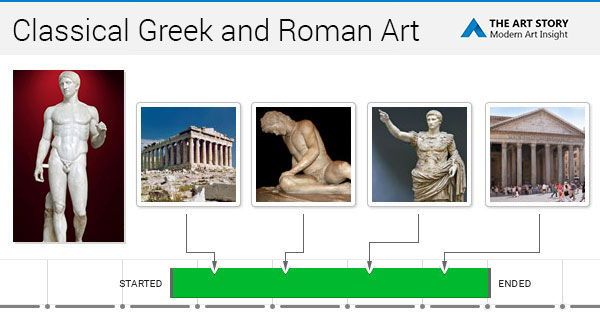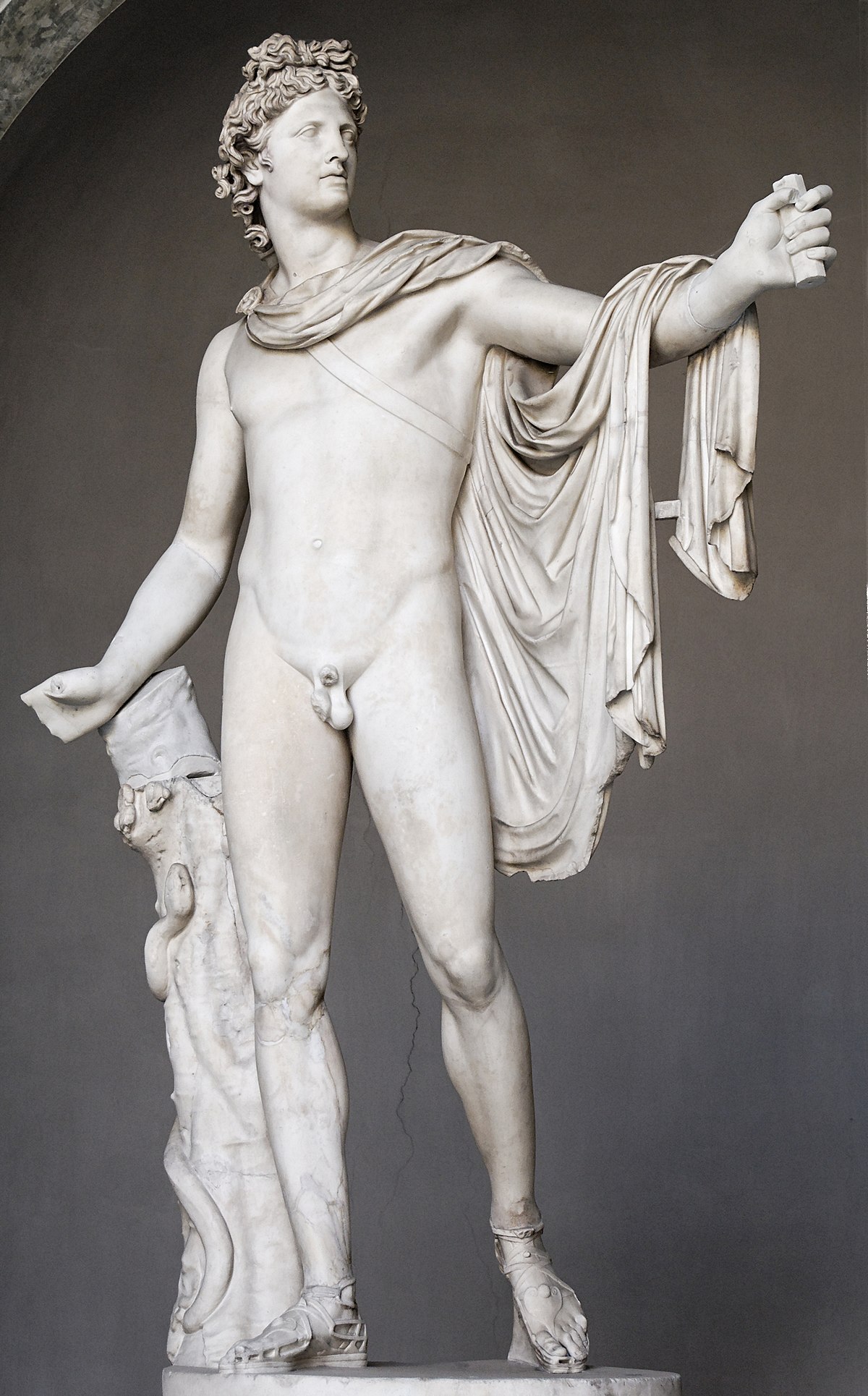Cal views were again available resulted in highly naturalistic art used to portray idealistic conceptions. In Annibale Carraccis Flight into Egypt 1604 the figures have been totally overwhelmed by a landscape which though containing much naturalistic detail is a highly ordered and tidied-up vision of nature.

Introduction To Ancient Greek Art Article Khan Academy
Classical greek sculptures became increasingly naturalistic and began to show the body as alive and capable of movement while maintaining an interest in portraying the ideal human anatomy Greek Architecture.

. They sought to capture the physical form of their objects in artwork. The High Classical Greek art was more idealistic and it showed how the Greeks wanted to be portrayed and the Hellenisic art is much more realistic. Greek sculpture marked the height of Classical art and Romantic art grew with Christianity.
Indeed John Boardman describes the work of Polyclitus Fig 2 a sculptor who canonized the male athletic body in classical period art as ideally realistic Boardman 157. The only materials available to the Egyptian sculptors were stones that had a very. The Romans took many elements from Greek art but brought a more naturalistic and ostentatious style.
The human form was a common subject of Classical art and was always presented as a generalized and idealistic figure with no emotionality. On the other hand much freedom could be seen in the Hellenistic art forms. Symbolic art for example was found in ancient Egypt.
The sculpture of the ancient Greeks had a major impact on. The sculpture of the Italian Renaissance comprises the approximate period between the late fourteenth and the early sixteenth century when Italian sculpture expressed a reaction against the aesthetic principles of Gothic and assimilating the influence of classical antiquity art humanism and rationalism developed a style that merged naturalistic and other idealistic elements into. When was the Greek early Classical period.
In Hegels analysis each style of art also had its paradigmatic art form. The Early Classical period also called the Period of Transition lasted from c. Create an account to start this course today.
Including innovations in painting sculpture decorative arts and architecture Classical Art pursued ideals of beauty harmony and proportion even as those ideals shifted and changed over the centuries. Their portraiture sculpture is regarded as the best sculpture of. Classical Greek sculpture is both naturalistic and idealistic.
The greek wanted to produce an ideal form greek art was used to explore nature and philosophy. A Broad Overview of the Classical Aesthetic. Their sculpture was predominantly portraiture see below until from the 1st century AD the Romans adopted Hellenistic sculpture which took sculpture to a different level as a model for their own sculpture.
Defined by a careful observation of nature a new concern for the mechanics of the body and the pursuit of ideal forms Classical Greek sculpture represents a radical departure from the compact forms and upright poses of Archaic male nudes. Poses seemed more naturalistic as shown by the Polykleitos of Diadumenos sculpture. Classical Greek figures appear more relaxed than the rigid formal Egyptian and early Greek sculptural poses because _____.
Prior to the influence of Greek sculpture Roman sculpture was portraiture sculpture busts. In the fallen warrior greece and the dying gaul roman copy both clearly represent a. Classical Greek sculpture is both naturalistic and idealistic.
Classical sculpture was both naturalistic and idealistic Government assembly halls The first Christian churches were patterned after basilicas used by he Romans as. Where Greek statues and sculptures depict calm ideal figures in the nude Roman sculpture is highly decorative and more concerned with realistic depictions of individualsThe Romans took many elements from Greek art but brought a more naturalistic. Classical Greek sculptors were more imaginative because the Enlightenment released them from the dogma of the pharoahs.
The expression of a figure is genrally solemn. It was also during the Renaissance that for thefirst time since Classical Greek Antiquity the three essential elements for science were brought together. Classical Greek sculpture is simple balanced and restrained.
The scientific skill of Greek sculptors in showing the human form in distinct poses was improved. One of the most important categories of art developed by the classical painters of the 17th century was landscape painting. The origin of sculpture in Greek and Roman art can almost be divided into distinct categories- classical and idealistic vs naturalistic and emotional sculpture work.
The classical period characterized modifications in both the function and the style of the sculpture. The sculptures were generally polychrome except for works made in bronze. A similar conflation can be found in the medium of classical sculpture which is both naturalistic and idealistic.
3 points QUESTION 25 1. What was a fundamental difference between Greek classical sculpture and Greek Hellenistic sculpture. Platonic idealism Aristotelian naturalism and logic.
The Classicism definition of art and architecture from the Greco-Roman eras emphasizes the qualities of balance harmony idealization and sense of proportion. During the classical period Greek sculptures did what no one had done before by worshiping the human body through bronze and The sculptures were both human-size and human-like. For Hegel Romantic Christian art was the high point of the history of art a history which he believed complete and closed.
Principle in classical Greek sculpture was one of refinement balance and simplicity. Greek art in idealistic the subject of greek art was often the mythological gods in an effort to express the ideal form of beauty physical strength and power. Art of Ancient Greeces Classical Period.
Art imitated the art of greeks but used a more naturalistic approach. The Greeks and Romans both represented gods and rulers in the form of statues a combination of religious and political influence.

Form And Reality The Classical Greek Balance Of The Ideal And The Natural Disrecognized Space

24 H David By Michelangelo Bust Sculpture Statue Amazon Ca Home

Greek Art Art History Teaching Resources

Art History Midterm Flashcards Chegg Com

Classical Art And Architecture History Theartstory

Classical Greek Sculpture Is Both Naturalistic And Idealistic True Or False Study Com

0 comments
Post a Comment